Sixteen teams. No days off within a series. Games in bubbles. More win-or-go-home games than ever before. Say what you will about the coming baseball postseason, but it's going to be different.
From a pitching standpoint, the task of rating staffs against one another has never been more complicated. The way teams have deployed their pitchers during October has changed quickly in recent years, but given the unusual parameters in 2020, we can chuck most of those lessons out the window. We will be learning along with the teams how to navigate four series (if you survive) in one mad dash for the crown.
Even in a normal season, the practice of forecasting playoff pitching is more an art than a science. For hurlers, track records are often less important than how a pitcher is throwing when the playoffs begin, though the two prisms tend to blend together to create focus. A hot reliever might have rolled into the All-Star break with a sub-2.00 ERA. Then he might have struggled during the second half and enter October with a 3.50-ish ERA. His career mark could be something like 2.50. How, then, should we expect him to pitch? There are lots of explanations for such a pattern. Could be injuries. Could be an evening-out of fortune. Could be fatigue. Pitchers are funny creatures.
With the advent of Statcast metrics in recent years, we have more and better data than we used to when addressing the key point: How has a pitcher been throwing? This year, that question is particularly pertinent because in a two-month season, everything qualifies as recent performance.
Then there is the question of role, which translates statistically into leverage-based metrics. Relief aces, used in key spots late in close games, have more of an impact on winning than bridge relievers or long relievers. Some relievers, used in mop-up roles, have little to no impact on winning. Starters have a major impact, but in the playoffs, their contributions are shaped by their quantity of innings and how many times their spot in the rotation comes up.
Usually, we don't focus too much on rotations beyond the top three at playoff time, though the fourth starter typically gets a turn in a long series. But in 2020, in a best-of-seven with no days off, will we have to consider a No. 5 starter? It's one of countless questions we will see answered in the weeks ahead.
Tying all of this together in one ranking of pitching staffs is a complicated thing. But of course we tried. Here are the steps we took in calculating the ranking metric: leveraged ERA.
• Based on recent usage and team news, we identified four starters and five key relievers for each team. The bulk of each team's forecast is made up of these pitchers, though numbers for a handful of lower-leverage pitchers are folded into the calculations.
• The starters are ordered one through four, the relievers are ranked one to five, based on anticipated leverage index, to create a kind of staff hierarchy.
• An updated track record-based forecast was generated for each pitcher, including 2020 results. These forecasts are based on ballpark-neutral statistics.
• The question of "how are they throwing?" was addressed using the Statcast-based metric expected earned run average (xERA), found at baseballsavant.mlb.com.
• Each pitcher's baseline ERA is a combination of his updated forecast and his xERA, with the weight given to the latter dependent upon how many hitters he has faced in 2020.
• Baseline ERAs are further weighted by anticipated usage, with higher-leverage innings having more impact than lower-leverage innings.
And that's it. Leveraged ERA is our best guess at combining the hard data of forecasts and Statcast metrics with the strategies that should define the first-ever 16-team playoff.
We ranked the leagues separately. As with the hitters we ranked Wednesday, we included the eight teams that have pretty much locked up spots in the American League, along with the 10 teams still kicking in the National League. However, for the Senior Circuit, we added one team: The Mets had a good day on Tuesday by winning, while the Phillies were swept in a doubleheader by Washington. New York has just around a 1-in-10 chance at sneaking in, but we decided to include them anyway.
Let's see how it all shook out.
American League
Leveraged ERA: 3.68
Key rankings: Strikeouts: 3 | Walks: 1 | K:BB: 1 | Homers: 4
Probable starters: Shane Bieber, Zach Plesac, Carlos Carrasco, Aaron Civale
Key relievers: Brad Hand, James Karinchak, Nick Wittgren, Oliver Perez, Phil Maton
It's really no surprise that the Indians come out as our overall top-ranked staff entering the postseason. They have the best-in-2020 ace in Shane Bieber, more good starters than they can use during a playoff series and a very good bullpen to boot.
Added to the postseason bullpen mix will be rookie starter Triston McKenzie, who has been impressive during his debut season. His Statcast metrics aren't off the charts, but he's the kind of pitcher who can lock down the middle innings if the Indians get a short outing from a starter or two during a series.
From a Statcast perspective, the pitcher to watch is breakout reliever James Karinchak, whose 2.03 xERA ranks third in baseball. He has struck out a whopping 17.3 batters per nine innings during the regular season. That's the third-best total of all time for pitchers with at least 25 innings pitched in a season. But it's only second in 2020. We'll get to No. 1 during the National League section.
Leveraged ERA: 3.71
Key rankings: Strikeouts: 1 | Walks: 5 | K:BB: 4 | Homers: 1
Probable starters: Blake Snell, Tyler Glasnow, Charlie Morton, Ryan Yarbrough
Key relievers: Nick Anderson, Diego Castillo, Aaron Loup, Oliver Drake, Pete Fairbanks
The Rays have long been synonymous with depth, and this season they've needed it. Tampa Bay's staff has been beset by injuries to impact pitchers, including Jose Alvarado, Jalen Beeks, Andrew Kitteridge, Colin Poche and Chaz Roe. And yet ... here they are. The big question: Will all of those missing names put a squeeze on one of baseball's deepest organizations, given the challenge ahead? We'll find out, but in the meantime, Alvarado is reportedly lined up to throw a simulated game on Thursday, so maybe the Rays will get back one of their chief weapons just in time.
Leveraged ERA: 3.91
Key rankings: Strikeouts: 2 | Walks: 4 | K:BB: 3 | Homers: 2
Probable starters: Gerrit Cole, Masahiro Tanaka, J.A. Happ, Jordan Montgomery
Key relievers: Aroldis Chapman, Zack Britton, Adam Ottavino, Chad Green, Jonathan Holder
The Yankees' postseason rotation is still a bit of a mystery, but the four veterans listed above seem like the likely base four. Rookie Deivi Garcia has had some impressive moments, but his starts have gotten progressively worse and, at the moment, he looks slated for the postseason bullpen.
The good news for Yankees fans is that Montgomery's 5.12 ERA over nine starts might be his most misleading indicator. His projection is 4.69 -- still not great, but better -- but his Statcast-based xERA is 3.61. That suggests he has thrown the ball better than his results indicate. If that's what Aaron Boone sees, he should feel fine about throwing him in October.
We all know about New York's high-powered, proven bullpen. Just one possible red flag to monitor: Chapman's xERA (3.51) isn't quite in the dominant class. It's still very good, but it's worth watching whether Chapman can ramp things up a little when the bright lights come on.
Leveraged ERA: 4.11
Key rankings: Strikeouts: 4 | Walks: 2 | K:BB: 2 | Homers: 6
Probable starters: Kenta Maeda, Jose Berríos, Michael Pineda, Rich Hill
Key relievers: Sergio Romo, Taylor Rogers, Trevor May, Tyler Clippard, Tyler Duffey
Jake Odorizzi's hard-luck season probably leaves him out of Minnesota's playoff rotation, even if he can get somewhat healthy. And if that happens, Odorizzi will be a pretty nice depth piece. Pineda has thrown extremely well since returning from suspension, and Hill has oodles of postseason experience.
If he can put it together, Odorizzi could prove to be a needed infusion for the Twins' bullpen, which has been more solid than outstanding this season. Not listed here are three dark-horse firemen with wicked-good Statcast metrics: Matt Wisler, Caleb Thielbar and Jorge Alcala. There are always such unsung relievers who step to the fore in October, and the Twins have promising alternatives to the bigger names in their bullpen.
In any event, in their epic quest to finally beat the Yankees -- at least once -- the Twins should be willing to send anyone and everyone to the mound, including Jim Kaat, Bert Blyleven, Mudcat Grant or a reincarnated Walter Johnson.
Leveraged ERA: 4.19
Key rankings: Strikeouts: 6 | Walks: 7 | K:BB: 7 | Homers: 3
Probable starters: Zack Greinke, Jose Urquidy, Lance McCullers Jr., Framber Valdez
Key relievers: Ryan Pressly, Josh James, Enoli Paredes, Andre Scrubb, Blake Taylor
It looks a little different without Justin Verlander and Gerrit Cole, doesn't it? It's a very new-looking cast of characters for the Astros' staff this postseason, one full of unknowns. With unknowns come variability, however, and there is a reason we selected the relievers listed here to be featured. They've thrown well. One sleeper not listed: Rookie Christian Javier, who has worked mostly as a starter and can't be ruled out of doing the same in the playoffs. His xERA ranks second to Blake Taylor among the likely Houston playoff hurlers, and he features possibly the best swing-and-miss stuff of the bunch. Another hurler to watch is Josh James, who normally features plus stuff in whatever role he occupies. James' xERA this season (6.72) is problematic, but he has looked sharp over the last couple of weeks.
Leveraged ERA: 4.23
Key rankings: Strikeouts: 5 | Walks: 3 | K:BB: 5 | Homers: 7
Probable starters: Jesus Luzardo, Chris Bassit, Frankie Montas, Sean Manaea
Key relievers: Liam Hendriks, Joakim Soria, J.B. Wendelken, Jake Diekman, Yusmeiro Petit
Oakland's rotation requires a bit of guesswork, with Mike Fiers and Mike Minor both very much in the mix. However Bob Melvin sets up his starters, what he wants to do is set up his tremendous bullpen. Minor has relieving experience and could help bridge any gaps between the starters, who haven't often worked deep, and the meat of the Oakland bullpen. If the Athletics can play with a lead into the middle innings, they will be tough to beat.
Leveraged ERA: 4.33
Key rankings: Strikeouts: 8 | Walks: 8 | K:BB: 8 | Homers: 5
Probable starters: Lucas Giolito, Dallas Keuchel, Dylan Cease, Dane Dunning
Key relievers: Alex Colome, Codi Heuer, Matt Foster, Aaron Bummer, Garrett Crochet
Aaron Bummer entered the season as Chicago's top reliever, even with Alex Colome serving as the closer. His campaign has been upended by a biceps injury. However, Bummer threw a sim game early this week, and if he can get into a game before the end of the regular season, the White Sox's bullpen sudden looks very deep and dangerous.
For one thing, when you talk about unheralded, emergent relievers in the postseason, you have to mention the White Sox. Codi Heuer debuted this season and has been consistently nasty. Matt Foster isn't as high octane but has been a dynamic middle-inning option, often for more than three outs. And, recently, Chicago's 2020 first-round pick Garrett Crochet debuted. His average fastball velocity thus far is 100.2 mph. That's average, not maximum. Just try to watch the lefty without thinking about Chris Sale, who also debuted for the White Sox during the year he was drafted, back in 2010.
Of course, the key for Chicago's staff is to get to the hard throwers in the bullpen with a lead, so it's incumbent on the starters to keep the club in games early.
Leveraged ERA: 4.54
Key rankings: Strikeouts: 7 | Walks: 6 | K:BB: 6 | Homers: 8
Probable starters: Hyun-Jin Ryu, Taijuan Walker, Robbie Ray, Matt Shoemaker
Key relievers: Jordan Romano, Nate Pearson, A.J. Cole, Rafael Dolis, Anthony Bass
The Jays will start Hyun-Jin Ryu in their first game next week. After that, good luck figuring it out. The good news is Charlie Montoyo has a lot of familiar names to pick from: Taijuan Walker, Tanner Roark, Robbie Ray, Matt Shoemaker (if healthy), Trent Thornton, Chase Anderson. The problem is none of these pitchers have been lighting things up of late. In fact, Roark, Ray and Anderson all have xERAs over 6.
Shoemaker has the best indicators of the non-Ryu group, but he's still building up after coming back from a lat strain and might have to be piggy-backed. Ray is still throwing hard but has too often impersonated an early-season Nuke LaLoosh in 2020. He might be worth throwing out there on the basis of stuff alone, while Montoyo hopes he's having a good command day. Ray is headed into free agency and has to be motivated to leave a good impression after what has been a rough campaign.
The bullpen will be without closer Ken Giles, who recently announced he will undergo Tommy John surgery. Romano has been out with a finger injury but has been throwing. If he can return and flash the stuff he did early in the season, Montoyo might be able to fashion a tough back of the bullpen out of Romano and Nate Pearson, the hard-throwing rookie starter who is also working his way back from injury.
In any event, that's a lot of moving parts for a team a few days away from the playoffs.
National League
Leveraged ERA: 3.75
Key rankings: Strikeouts: 2 | Walks: 7 | K:BB: 3 | Homers: 1
Probable starters: Trevor Bauer, Luis Castillo, Sonny Gray, Tyler Mahle
Key relievers: Raisel Iglesias, Archie Bradley, Amir Garrett, Lucas Sims, Tejay Antone
None of the teams vying for the large, soft underbelly of the National League bracket is in position to set up their rotation for the playoffs. Because, you know, they have to get in first. Cincinnati appears to at least be lined up to start Trevor Bauer in its first postseason game, if they get a first postseason game, so that's a nice starting point.
The Reds have a somewhat top-heavy pitching staff, but it's one that is set up perfectly for a deep October run. If they can get there, of course. Bauer, Luis Castillo and Sonny Gray (just back from injury) all consistently work deep into games. The bullpen was fortified at the deadline with the addition of Archie Bradley. In Tejay Antone, Cincinnati has the kind of unsung bullpen weapon that we speak of at playoff time. He's vicious.
The rankings listed with each of these teams are based on only the numbers of the pitchers projected to pitch in any kind of leverage or starter's role during the playoffs. The collective ability of the Reds' staff to keep the ball in the park could prove to be an enormous factor in October, where one key long ball so often decides a tight game.
The Reds' position player mix has been befuddling in a lot of ways, from the time it was put together through the way it's performed on the field. There is no such head-scratching required for the pitching staff. The Reds' hurlers can deal and could carry this club a long way.
If, in fact, Cincinnati gets into the playoffs.
Leveraged ERA: 3.77
Key rankings: Strikeouts: 4 | Walks: 8 | K:BB: 5 | Homers: 3
Probable starters: Brandon Woodruff, Corbin Burnes, Adrian Houser, Josh Lindblom
Key relievers: Devin Williams, Josh Hader, Brent Suter, Eric Yardley, Drew Rasmussen
As with the Reds, the Brewers are more concerned about getting into the playoffs than figuring out who will pitch when they get there. But, like the Reds, Milwaukee is poised to do damage if it does play on. It's a different formula than Cincinnati's. While the Reds are built around a dynamic big three in their rotation, the Brewers' hopes are built around perhaps the best one-two bullpen punch in all of baseball.
That would be the dynamic duo of Josh Hader and Devin Williams. Hader has been an ever-looming presence in the baseball postseason the past couple of years, with his availability forever being monitored as a key strategic point as high-pressure games play out. Hader has been more up and down than usual this year, but he leads the NL in saves and has a 14.8 strikeouts-per-nine-innings rate, which is nothing to sneeze at.
Williams has been better than Hader.
Remember back when we were discussing the Indians and quoted the alarming 17.3 K/9 strikeout rate of James Karinchak? Williams is at 18.7. That's not only the best K/9 rate of all time (minimum 25 innings), it's more than a strikeout per inning more than any other pitcher, ever. Williams' xERA (1.24) is baseball's best. Opponents are 1-for-59 against his changeup. It's unreal.
So imagine this nightmare scenario if you're the Dodgers who, some have plausibly claimed, might have their best-ever roster: Christian Yelich breaks out of a season-long slumber with a three-run homer early in the opener of a wild-card series at Chavez Ravine. Brandon Woodruff, one of the game's better young starters, holds the lead into the seventh, turning the game over to Williams and Hader.
The next night, Yelich homers again, another top young starter in Corbin Burnes holds the Dodgers down, and Williams and Hader knock the mighty Dodgers out of the bracket. Folks, if the Brewers are in the way of your team, root against them the next few days. You don't want to face this staff.
Leveraged ERA: 4.00
Key rankings: Strikeouts: 7 | Walks: 6 | K:BB: 7 | Homers: 6
Probable starters: Clayton Kershaw, Walker Buehler, Dustin May, Tony Gonsolin
Key relievers: Kenley Jansen, Blake Treinen, Jake McGee, Joe Kelly, Pedro Baez
Unlike the mid-pack teams clawing and scratching to visit Dodger Stadium next week, L.A. is very much in position to set up its rotation. It's not entirely clear how the Dodgers want to do that, but they can't go wrong with the pitchers listed. Dave Roberts has already announced that Clayton Kershaw and Walker Buehler will take the ball in the first two games.
The Dodgers have a deep bullpen that will be augmented by those who don't make the playoff rotation, such as lefty Julio Urias. There are always gnawing concerns. Kershaw has thrown better than he has in years, but there are those probably-not-real concerns about his postseason problems. Buehler has not been ship-shape this season and is trying to come back from a blister issue. And, as ever, Kenley Jansen is probably fine, but ... he's no longer the auto-save he used to be.
Nevertheless, the Dodgers would not be baseball's best team if they did not have one of the sport's best pitching staffs.
Leveraged ERA: 4.00
Key rankings: Strikeouts: 1 | Walks: 4 | K:BB: 2 | Homers: 7
Probable starters: Mike Clevinger, Dinelson Lamet, Zach Davies, Chris Paddack
Key relievers: Trevor Rosenthal, Drew Pomeranz, Craig Stammen, Emilio Pagán, Tim Hill
According to forecasts, the Padres figure to have five pitchers on their playoff roster who strike out at least 10 batters per nine innings. Those hurlers, in order by K-rate, are Dinelson Lamet, Trevor Rosenthal, Mike Clevinger, Emilio Pagan and Drew Pomeranz.
It's an exciting picture. Let's play Jackson Pollock and throw some random splashes of nonsensical paint on the canvas. The dirty little secret about presumed San Diego ace Clevinger is that his Statcast metrics have lagged for most of the season. His xERA for 2020 is a pedestrian 4.72. Zach Davies has been dazzling, but his xERA is 5.28. As for Lamet ... he's awesome.
The playoffs will be a good test of first-year manager Jayce Tingler and his ability to parse out high-leverage relief innings. Based on Statcast, he's got a very good big three at the back end of the pen in Rosenthal, Craig Stammen and Pomeranz. After that, Tingler will have to get creative and seek to maximize matchups.
A monkey wrench was thrown into the Padres' plans Wednesday when Clevinger left his start after just one inning as biceps tightness that caused him to miss a start Saturday flared up again. He underwent tests, including an MRI, after the game.
Leveraged ERA: 4.09
Key rankings: Strikeouts: 3 | Walks: 1 | K:BB: 1 | Homers: 2
Probable starters: Jacob deGrom, Rick Porcello, Seth Lugo, David Peterson
Key relievers: Edwin Diaz, Justin Wilson, Dellin Betances, Jared Hughes, Jeurys Familia
Well, before we touch on the Mets' staff, which remains highly unlikely to be pitching in the playoffs, let's mention the New York lineup, which we ignored Wednesday. If we had included the Mets in our lineup rankings, New York would have ranked second in the NL, albeit well behind the Dodgers. The Mets have an outstanding offensive team.
Alas, the pitching staff has been a major disappointment, or else New York would not be looking at a 10% shot at playoff baseball entering the season's final days. Jacob deGrom has been as great as ever and Edwin Diaz has overcome his early gopherball-itis to put up outstanding numbers. Beyond that, it's been a story of injury and underperformance.
Leveraged ERA: 4.10
Key rankings: Strikeouts: 8 | Walks: 5 | K:BB: 6 | Homers: 5
Probable starters: Aaron Nola, Zack Wheeler, Zach Eflin, Vince Velasquez
Key relievers: Hector Neris, David Phelps, Blake Parker, Brandon Workman, Tommy Hunter
With a one-two rotation punch of Aaron Nola and Zack Wheeler, the Phillies have quite a head start on other clubs when comparing pitching staffs. Unfortunately, it gets pretty ugly after that. In a widely shared tidbit, according to baseball-reference.com data, the Phillies' 7.21 bullpen ERA is the second worst ever, behind their Philly predecessors in 1930 (the year the NL's aggregate batting average was .301).
The good news is if you shrink the staff down to those likely to occupy key roles in a playoff scenario, and combine that with underlying metrics, the outlook isn't hopeless. Zach Eflin gives Philly a quality third starter, just to name one pitcher. It's kind of a miracle the Phils have hung in this long, and it's still far from a sure bet they'll be playing after Sunday. But it doesn't have to be a disaster if the Phillies do make the playoffs.
Leveraged ERA: 4.20
Key rankings: Strikeouts: 5 | Walks: 9 | K:BB: 8 | Homers: 8
Probable starters: Jack Flaherty, Adam Wainwright, Kwang Hyun Kim, Carlos Martinez
Key relievers: Giovanny Gallegos, Andrew Miller, Ryan Helsley, Genesis Cabrera, John Gant
Ground-balling lefty Kwang Hyun Kim and veteran Adam Wainwright -- who has single-handedly revived the word "moxie" -- have been terrific. Neither craftsman has a Statcast-friendly arsenal. And that might not be a bad thing for a Cardinals run-prevention machine that has baseball's best defensive metrics this season.
The bullpen has been a work in progress for manager Mike Shildt. He just got high-leverage reliever Giovanny Gallegos back from the injured list. Andrew Miller -- who was Hader before Hader -- has thrown well for the most part and is trending upward. Long-time prospect Alex Reyes seems poised to finally make an impact in some kind of key role.
Really, though, it might all come down to Jack Flaherty. Flaherty hasn't been terrible by any stretch, and his results have obscured underlying metrics that remain solid. Still, no matter how you slice it, Flaherty hasn't been as good as he was during his breakout season of 2019, when he looked like the second coming of Bob Gibson.
If that Flaherty returns, the Cardinals will be in good shape during the postseason.
Leveraged ERA: 4.22
Key rankings: Strikeouts: 6 | Walks: 11 | K:BB: 10 | Homers: 4
Probable starters: Max Fried, Ian Anderson, Kyle Wright, Huascar Ynoa
Key relievers: Mark Melancon, Shane Greene, Chris Martin, Darren O'Day, Will Smith
The trials of the Atlanta rotation are ongoing. Just this week, after a season of injuries and disappointment, it seemed the Braves got a boost by the return of veteran Cole Hamels. Hamels faced 14 batters, and is done for the season.
Still, the long-ballyhooed depth of the Braves' pitching development effort seems to be paying off just in time. Max Fried returned from an injury of his own and went right back to dealing. Rookie Ian Anderson has a 2.45 xERA. Young righty Kyle Wright, who seemingly had been unable to hold his command together for more than a couple of innings at a time, has strung together two straight good starts. If Huascar Ynoa doesn't end up as the No. 4 starter, then it could be rookie Bryse Wilson, who was terrific in a start against the Marlins on Tuesday.
All of this is good news for a team that has succeeded with a great offense and a deep, dependable, veteran bullpen. If that combination is suddenly augmented by a rotation that can get two times through the order consistently starting next week, Atlanta is very much a prime championship contender.
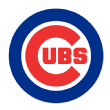 9. Chicago Cubs
9. Chicago Cubs
Leveraged ERA: 4.27
Key rankings: Strikeouts: 9 | Walks: 3 | K:BB: 4 | Homers: 9
Probable starters: Yu Darvish, Kyle Hendricks, Jon Lester, Alec Mills
Key relievers: Craig Kimbrel, Jeremy Jeffress, Andrew Chafin, Duane Underwood Jr., Ryan Tepera
The Cubs aren't nearly as top-heavy as the Phillies, but there are some similarities. Darvish and Hendricks are a fine one-two front of the rotation. Lester started well but now has a 5.93 xERA. Alec Mills threw a no-hitter. That was very nice. His xERA is 4.85, and his track record-based projected ERA is 4.83. Jose Quintana is back in the mix but isn't stretched out. The bullpen can use him, anyway. David Ross has done a great job keeping things together this season, his first in the Chicago dugout. He'll look like the spiritual child of Frank Chance, Leo Durocher and Joe McCarthy if he can guide this club deep into the postseason.
 10. Miami Marlins
10. Miami Marlins
Leveraged ERA: 4.31
Key rankings: Strikeouts: 11 | Walks: 2 | K:BB: 9 | Homers: 10
Probable starters: Sixto Sanchez, Pablo Lopez, Sandy Alcantara, Trevor Rogers
Key relievers: Brandon Kintzler, Yimi García, Brad Boxberger, Nick Vincent, Richard Bleier
The Marlins' young quartet of starters is exciting. Collectively, they don't miss as many bats as you might think. But the stuff is alive and backed up by Statcast expectations. If Miami goes on a run -- if they get in -- it'll be on the backs of these pitchers. The bullpen is more of a smoke-and-mirrors proposition. Still, is there really any possible outcome of a Marlins playoff appearance that could be termed a disappointment?
Leveraged ERA: 4.62
Key rankings: Strikeouts: 10 | Walks: 10 | K:BB: 11 | Homers: 11
Probable starters: Kevin Gausman, Johnny Cueto, Drew Smyly, Tyler Anderson
Key relievers: Tony Watson, Tyler Rogers, Jarlin Garcia, Sam Coonrod, Sam Selman
The Giants have a deep bullpen long on options, if a bit short on dominance. The rotation gets a boost from Kevin Gausman, who missed a couple of turns but was very good in his last outing. Then his elbow tenderness resurfaced. San Francisco needs Gausman intact if they do survive the regular season because he's the Giants starter most likely to match the output of an opposing ace.

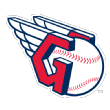 1.
1.  2.
2. 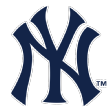 3.
3.  4.
4. 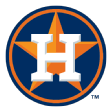 5.
5. 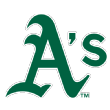 6.
6. 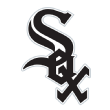 7.
7.  8.
8.  1.
1. 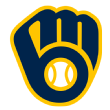 2.
2.  3.
3.  4.
4.  5.
5.  6.
6.  7.
7. 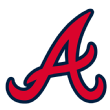 8.
8.  11.
11.